#aula palatina
Text
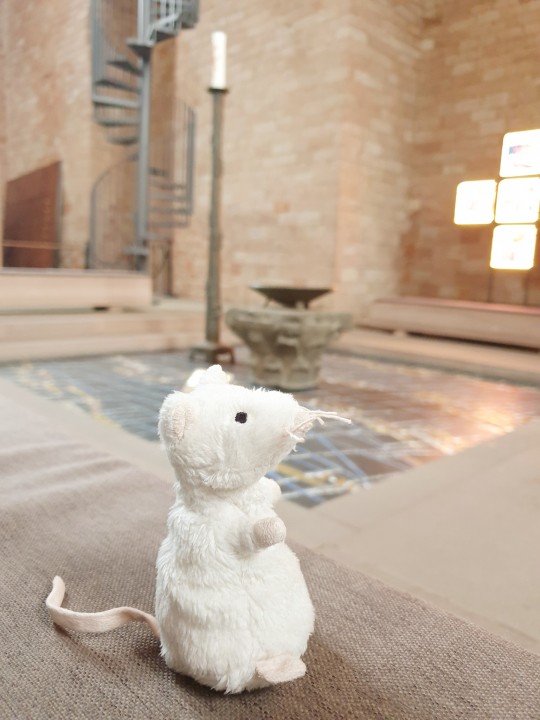


Ancient Roman architecture makes for impressive modern buildings!
The Aula Palatina was build as a Roman palace (around 300 AD) and does now belong to the Evangelical Church in the Rhineland. In it's long history the basilica fell to ruin several times. Most recently 1944 when the church burned down in an US airstrike (during WWII).
#basilika trier#ancient roman#ratty's adventures#church#ratty is an angel#my sketches#idk where i'm going with this#just having fun with a plush toy#and sketching imaginary scenes about it#aula palatina#trier#basilica of constantine#unesco world heritage#©annavonihlenburg
9 notes
·
View notes
Text
This is the ancient Roman part of #Trier: once a capitals of Rome.
Way up north, in #Germany. Same altitude as London.
The only Roman city gate that survived. There used to be four of these large Gate Buildings with a street leading up to the walled city.
The Aula Palatina. The throne room of emperor Constantine.
Gladiator arena.
Music:: Scott Buckley, Long Dark
In the full video: the Roman structures, the medieval squares and streets, the baroque rococo palace, in a 4K walkthrough
Share
youtube
#visit Germany#travel#tourism#wonderjourneys#wanderlust#youtube#touristdestination#trier#rome#ancient rome#architecture#walking tour#caught in 4k#deutchland#aula palatina#summer vibes#city trip#city travel#rococco#baroque
6 notes
·
View notes
Text



The Aula Palatina, also called Basilica of Constantine (German: Konstantinbasilika), at Trier, Germany, is a Roman palace basilica and an early Christian structure built between AD 300 and AD 310 during the reigns of Constantius Chlorus and Constantine the Great.
94 notes
·
View notes
Text
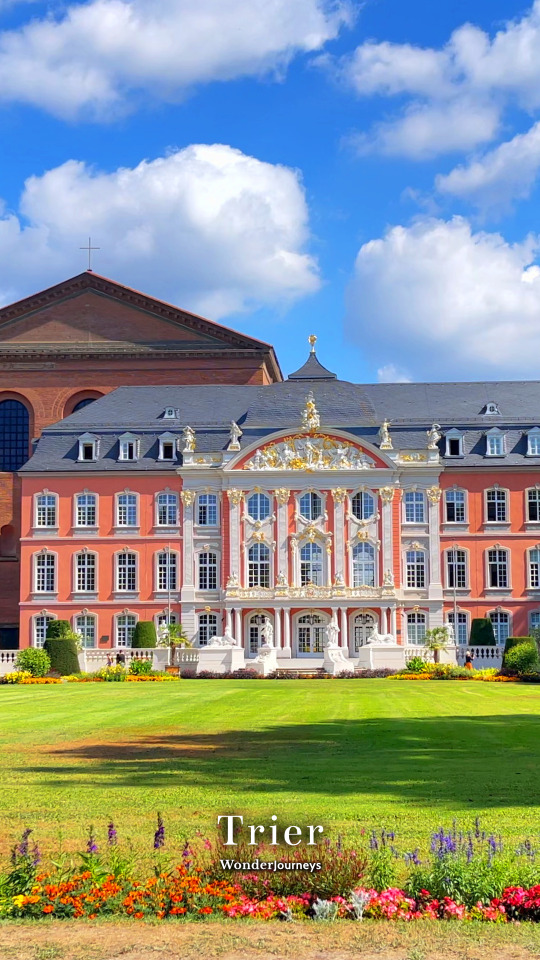
Trier - Kurfürstliches Palais, with the ancient Roman hall Aula Palatina in the back
youtube
#travel#wonderjourneys#wanderlust#touristdestination#germany#youtube#trier#hidden gems#hidden gem#travel Germany#visit germany#roman empire#rococo#roman#architecture#deutschland#kurfürstliches palais#Youtube
1 note
·
View note
Text
I LUOGHI DELL'ANIMA
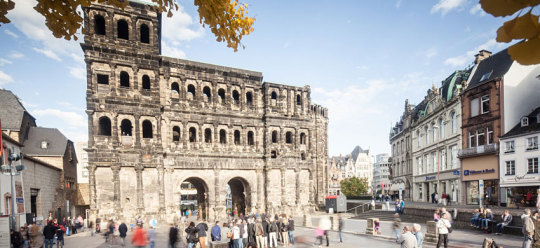
"Gita" oltre confine per questa occasione: ci "rechiamo" infatti a Trier (Treviri), amena cittadina nel Nord-Ovest della Germania.
Fa parte del land della Renania-Palatinato. Si trova vicina al confine con il Lussemburgo, da cui dista soltanto 15 chilometri. Treviri è considerata a tutti gli effetti una delle città più antiche del paese. Visitandola non ci metterete molto a rendervene conto: in molti l’hanno definita un misto tra “l’imponenza romana” e “l’eleganza francese”. Sì, perchè di Treviri si hanno notizie addirittura 1300 anni prima dell’arrivo dei romani: secondo una leggenda fu il figlio del re degli Assiri a fondarla. Tuttavia, furono proprio i romani ad evidenziare la presenza di Treviri nel 16 a.C., quando fu celebrata con l’antico nome Augusta Treverorum:
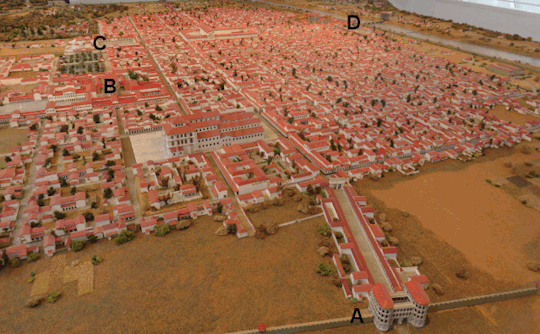
nei secoli successivi la città crebbe e si sviluppò, tanto che attorno al 300 d.C. Raggiunse gli 80.000 abitanti, diventando così la città più popolosa al di là delle Alpi. Ancora oggi in ogni angolo di Treviri si respira la storia e la cultura del periodo romano, a cui si unisce la dominazione francese di fine ‘700 e successivamente quella prussiana. Treviri è una città non molto grande, e il suo centro storico è facilmente percorribile anche a piedi: ma nonostante le dimensioni, la città è ricca di preziosità e perle architettoniche che vale davvero la pena visitare fino in fondo.
Quest’incantevole città situata nel bel mezzo della valle della Mosella è caratterizzata da secoli di storia che l’hanno modellata e resa la bellezza che tutti i turisti oggi possono ammirare.
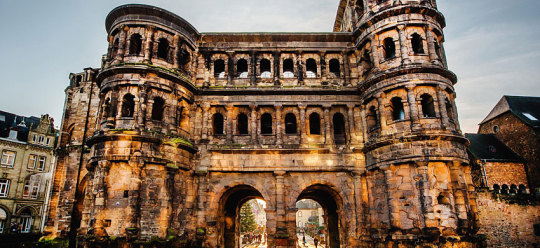
La Porta Nigra è forse l’elemento principale di storia romana presente a Treviri. Una porta in pietra arenaria, risalente al secondo secolo d.C., situata nella zona più a nord del centro storico. Il soprannome “Nigra” le è stato affibbiato nel Medioevo, prendendo spunto dalla pietra scura di cui è composta. La Porta Nigra, attraversabile a piedi, mantiene il grande impatto visivo e la possenza di duemila anni fa: la facciata è contornata da due torri, entrambe di quattro piani, collegate tra loro mediante una scala a chiocciola. Nel corso dei secoli, la Porta Nigra, che resta la più grande porta romana al di là delle Alpi, ha assunto anche la funzione di “doppia chiesa”.

La storia romana che caratterizza pienamente Treviri prosegue una volta attraversata la Porta Nigra: davanti ai vostri occhi ecco la Basilica di Costantino, o Konstantinbasilika, che prese il nome dal famoso imperatore. Fu lui, insieme alla moglie Elena, a rendere la città il fulcro della cristianità romana. La struttura, risalente al quarto secolo, era considerata all’epoca della sua realizzazione una delle maggiori basiliche con aula unica coperta: per questo la Basilica è detta anche Aula Palatina. Le dimensioni della Basilica sono ragguardevoli: con i suoi 67 metri di lunghezza l’interno è davvero molto ampio, mentre l’altezza è di 36 metri. La struttura è davvero imponente e dall’esterno potrebbe persino non sembrare una chiesa, per via delle finestre ad arco e del colore rosso-beige.
Per altre informazioni su Treviri o Trier, consultate il link:
0 notes
Text
Asturias-España. Las cosas del Principado...
Santa María del Naranco es la joya de la arquitectura prerrománica asturiana.
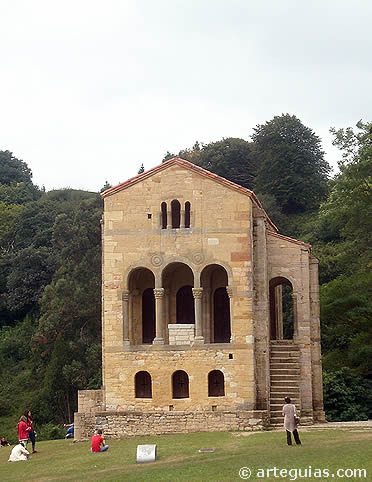
Originalmente era un aula palatina de dos plantas, transformándose en iglesia antes de finalizar el siglo IX.
#Santa María del Naranco es la joya de la arquitectura prerrománica asturiana.#Historias del Principado.#¿Historias cortas para no dormir?
1 note
·
View note
Text
Najtragiczniejsza Historia Miłosna Z Auschwitz
W układu lat, które upłynęły z tego okresu obracały się zasady, którymi ta Komisja Standaryzacji Nazw Geograficznych rzuca się przy ustalaniu zalecanego nazewnictwa. Wolałabym polecać tą podstawę geografii ale boję się, że taż nie dam rady się nauczyć a biologię choć będę uznawała 5 nauce w procesu tygodnia. W współczesnej przypadłości nie jest jednak mieszkania na bezczynność. W maju 1945 został przerwany przez brytyjskie wojska i dnia 23 maja popełnił samobójstwo, co natomiast nie zostało do celu wyjaśnione. 5 maja 1818 r. Studenci zdobędą naukę oraz kompetencji z zakresu zarządzania podmiotami funkcjonującymi w sferze usług turystycznych i rekreacyjnych, budowania przewagi konkurencyjnej i decydowania strategicznego przy zastosowaniu walorów krajoznawczych i regionalnych danego regionu geograficznego. W II wieku wybudowano mury obronne, a dostępu do centrum broniły bramy Porta Nigra , Porta Inclyta usytuowana przy nowym wiadukcie na Mozeli , Porta Alba też Porta Media. Tereny leżące na wschód od Renu zostały wydane na cztery departamenty : departament Saary ze siedzibą w Trewirze, departament Mont-Tonnerre (Donnersberg) ze warszawą w Moguncji , departament Renu i Mozeli ( Koblencja ) oraz departament Rury ( Akwizgran ).
Trewir tkwi w środkowej części doliny Mozeli. Za Konstantyna Wielkiego dokonano podziału Cesarstwa Rzymskiego na 4 prefektury - Wschód ( Konstantynopol ), Illyricum (Sirmium), Italia ( Mediolan ) oraz Galia (Trewir). Od roku 318 Trewir był siedzibą prefektury galijskiej (łac. Praefectus Praetorio Galliarium), samej z dwóch najważniejszych części administracyjnych w cesarstwie zachodniorzymskim, które zarządzały prowincjami zachodniorzymskimi od Maroka po Brytanię . Do dziś wzięła się również aula tronowa (łac. Aula Palatina) cesarza Konstantyna, w której właśnie otrzymuje się kościół protestancki. Trewir był się stolicą samozwańczego cesarstwa galijskiego (łac. Imperium Galliarum) z antycesarzem Tetrikusem A na czele. Cesarstwo galijskie stało z powrotem wcielone do imperium rzymskiego przez cesarza Aureliana w 274 r. Pomiędzy kliknij . Legiony Juliusza Cezara podbiły plemiona Trewerów pomiędzy 58 a 50 rokiem p.n.e. W 30 r. Po prostu graciarnia. Zaś on nawet się nie zatroszczy o to, by odbyć tam porządek. Jedną z podstawowych zalet czerpania z technologie 6-3-5 jest toż, że jest owo szalenie przystępna metoda, a to jest głupia oraz szybka w myśli. Opinie, a zatem i kontynuowane w współczesnych sprawach decyzje, potrafią być, i oczywiście były, bardzo dyskusyjne. Nazwy dostępne są podejmowane przez organ nazewniczy i brane na terenie jego właściwości. Istnieją również nazwy wyrażone w języku nie piszącym na konkretnym regionie, np. polska firma Paryż dla francuskiej Paris czy francuska Varsovie i angielska Warsaw dla polskiej Warszawy.

Stereotypowo jesteśmy postrzegani jako ludzie pracujący 24/7 przed komputerami, wyszydzani przez kolejnych, a dodatkowo obiektem dowcipów. Metropolia Besarabii została zauważona jako inny związek wyznaniowy. W 326 roku prywatna rezydencja rodziny cesarskiej została przebudowana do podwójnej bazyliki , której pozostałości są ważne w Katedrze św. W kaplicy spotyka się też złoty różaniec podarowany przez św. Musieliby dać te same zadania, jakoś to również nie rozwiązałoby sprawy, bo przecież nowa podstawa jest własny typ zadań. Częścią murów obronnych był również amfiteatr , który służył też jako zachodnia brama wjazdowa. Działa to jeszcze języka polskiego, obfitującego w nazwy geograficzne zabierające się do celów leżących poza granicami naszego świata. Poprawia jej w tym wyjątkowo uczestnictwo w porządku edukacyjnym ZIN (Zumba Instructor Network). Od roku 367, za panowania Walentyniana I , Trewir po raz kolejny był się siedzibą cesarzy, aż do śmierci Teodozjusza Oraz w roku 395. Przez chwila lat (383-388) istniał również stolicą cesarza Magnusa Maksymusa . W przeciwieństwie do bardziej niszowych problemów pamiętają również przeważnie bardziej potrzebny wydźwięk, bo gdy ludzie z nas oglądają seriale, to niestety tłumaczyć to prześmiewczo, nie ocierając o hipokryzję czy cynizm. Jednocześnie niektóre z takich firm jak w realizacji niekierowane są a przez Komisję niezalecane.
Fakt jest jednak bardzo skomplikowany, budzi kontrowersje i łatwe spory. Problem polega na ostatnim, że jestem w wartości z rozszerzoną biologią i językiem polskim. Od września będę w sztuce maturalnej a ja nadal nie jestem mocna co pragnę zwracać na maturze a termin składania deklaracji szybko się zbliża. Broniło się tak za sprawą wykonywanego poprzez niego warsztatu, w którym wycieńczeni i źli odzyskiwali siły. Miasto wydzielone Trewir jest objęte przez tereny chodzące do powiatu Trewir-Saarburg . Rzymianie założyli miasto nazwane Augusta Treverorum ku czci cesarza Augusta . W II poł. III wieku miasto broniło się siedzibą arcybiskupa , a pierwszym biskupem Trewiru był Eucharius. Miasto odbudowano za panowania Konstancjusza I, który sprawił Treveris swoją siedzibą na lata 293-306. Trewir pełnił funkcje rezydencji władców cesarstwa zachodniorzymskiego do 395 r. Od 273 r. Trewir jest siedzibą biskupów katolickich . Po reorganizacji prowincji rzymskich w Niemczech cesarz August mianował Trewir stolicą prowincji Gallia Belgica . Niemczech , w regionu związkowym Nadrenia-Palatynat , port nad Mozelą . Trewir pretenduje do miana najstarszego osiedla w Niemczech. W XVII i XVIII wieku Trewir był ciągle zajmowany przez wojska francuskie w okresie wojny trzydziestoletniej (1618-1648), wojny Francji z Ligą Augsburską (1689-1697), wojny o sukcesję hiszpańską (1701-1714) oraz wojny o sukcesję polską (1733-1735). W 1794 r.
1 note
·
View note
Text
THE AULA PALATINA AT TRIER

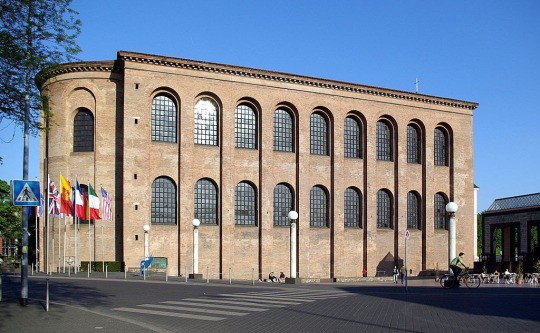
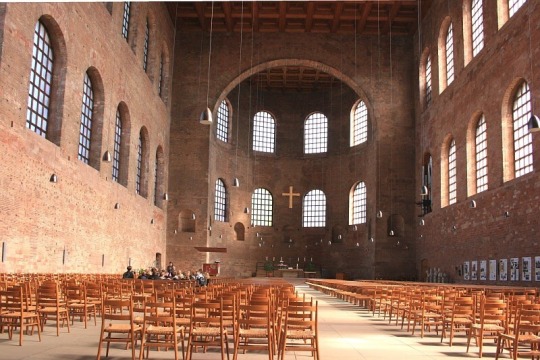
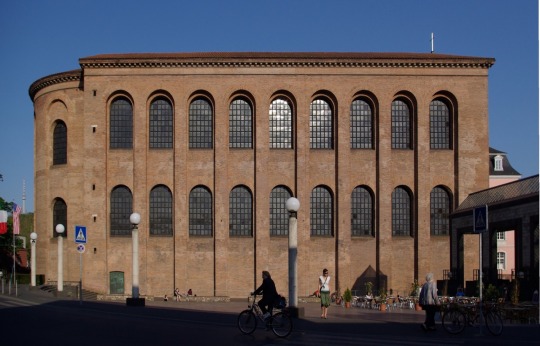
The capitol of Gallia Belgica, Colonia Augusta Treverorum (Trier) was among the oldest cities in Gaul. Its proximity to the Rhineland frontier led the cæsar of the west, Constantius Chlorus, to establish his principle residence there. His son, Constantine, grandson Constantine II, Valentinian, Gratian and a few usurpers followed suit. The imperial court attracted distinguished visitors to Trier: Ambrose, Athanasius, Augustine, Ausonius, Martin of Tours and Lactantius passed time in the city. This concentration of political, cultural, and ecclesiastical activity made Trier the de facto principal city of the western empire throughout much of the 4th century.
Constantius Chlorus built an imperial palace, occupying numerous insulae, in the northwest part of the city, to which Constantine added a basilica, the aula palatina, around AD 310. The basilica at Trier appears at first to be an example of brick-faced concrete masonry. In fact, the entire structure is solid brick, which was covered in white stucco scored to resemble marble in antiquity. The all-brick construction technique had been used in the eastern empire, but had no precedent in the west. Constantine had spent his youth as a good-faith hostage in the courts of Galerius in Thessaloniki and Diocletian in Nicomedia and may well have been the conduit through which this technique was transmitted through the west.
The aula palatina served as an audience hall. Seated on an elevated dais in the semi-circular apse, the emperor conducted the public business of the empire, receiving foreign visitors and suppliants, resolving disputes, issuing decrees and so on. The scale of the building provided a grandiose setting for the increasingly elaborate court ceremonial and the new, hieratic conception of the emperor instituted by Diocletian.*
In general, the sophisticated and innovative architecture of the 4th century resists the theory of a decline in the visual arts in the west. Besides their mastery of a completely unfamiliar construction technique, the architects of the basilica at Trier devised ingenious optional adjustments designed to endow the hall with an ideological function. As J. B. Ward-Perkins pointed out years ago,** the windows of the apse are slightly smaller, and spring from a slightly lower level than those of the east and west elevations. Furthermore, the distance between the two center windows of the apse is smaller than the interval between them and the outer windows. Finally, the flat ceiling of the apse is shorter than the nave. All this is obvious from the outside of the building, but inside, the expectation of continuity, from the nave across the triumphal arch and into the apse, of window size and height and ceiling height creates the optical illusion of a larger apse than the one that actually exists.
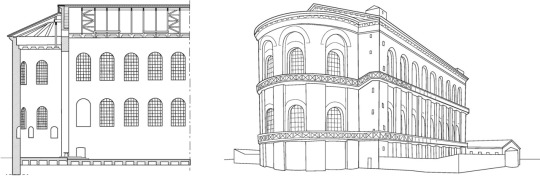
Ward-Perkins offers no explanation as to why the architects went to such lengths to create this illusion but the function of the building may supply one. By scaling the apse downward, while hiding that downsizing by optical illusions, the apse—and the emperor seated in it—appear to be larger than they are in reality. Had the apse windows and cieling been scaled the same as the nave, the emperor would have appeared relatively smaller. This calculated manipulation of the viewer’s perception of the emperor accords with the new, Diocletianic awesome, semi-divine conception of the imperial office, which requires a larger than life occupant of the throne. The architecture of the aula palatina actively participates in propagation of this new ideology.
In the Basilica Nova in Rome, completed by Constantine just before the building of the aula palatina at Trier, the two-story apse was occupied by the colossal statue of the emperor. At Trier, an out-sized ruler occupies the same location. This staging of the emperor, and the ideology it represents, are the products of subtle architectural adjustments and enhancements instead of sculptural amplification.
* Sabine McCormack, Art and Ceremonial in Late Antiquity (Princeton, 1981).
** J.B. Ward-Perkins, Roman Imperial Architecture (Harmondsworth, 1981).

In the 18th century, the western wall and façade of the basilica were demolished as part of the rebuilding of the Prince-Bishop’s palace. These, along with the timber roof and coffered ceiling, were restored in the 19th century. The Allied bombing of Trier in 1945 necessitated the rebuilding of the roof and ceiling.
below: Trier, Electoral Palace c, 1745; the Basilica in 1945.
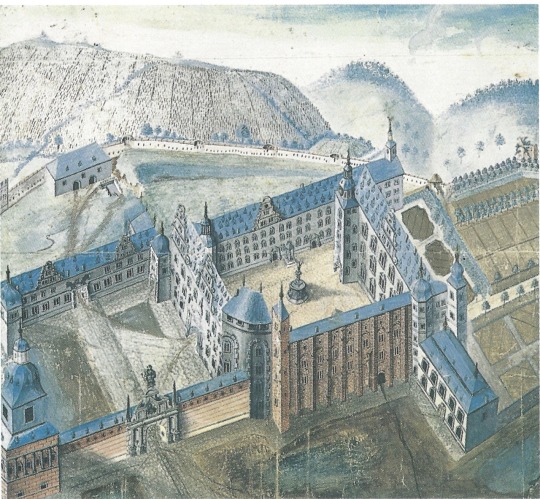
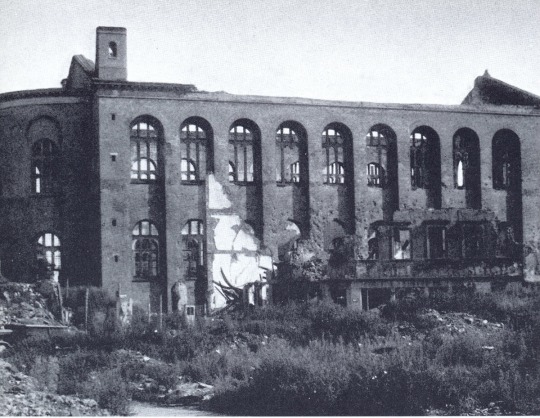
De Rerum Gestorum by CG Hughes is licensed under a Creative Commons Attribution-NonCommercial-NoDerivatives 4.0 International License. Permissions beyond the scope of this license may be available atdererumgestorum.tumblr.com/permissions.
#classical antiquity#roman architecture#trier#gaul#constantine#late antiquity#basilica#aula palatina
9 notes
·
View notes
Photo

The Aula Palatina, at Trier, Germany, is a Roman palace basilica from 4th century. Today it is converted in to an Evangelical Church.
4 notes
·
View notes
Text
Day 6, km670 - Trier
Our northernmost point being Aachen, we’ve headed south to my great grandparent’s hometown of Trier. Celts lived along the river here for countless centuries until the Romans arrived and again dominated a protected river valley with access to rock that could be readily quarried. Still existent Roman structures, standing as a testament to Roman culture and expertise, are the city gate (Porta Nigra or Black Gate), the main bridge over the Mosel (Rumansbruke), and the Aula Palatina, Constantine’s basilica or public assembly hall.
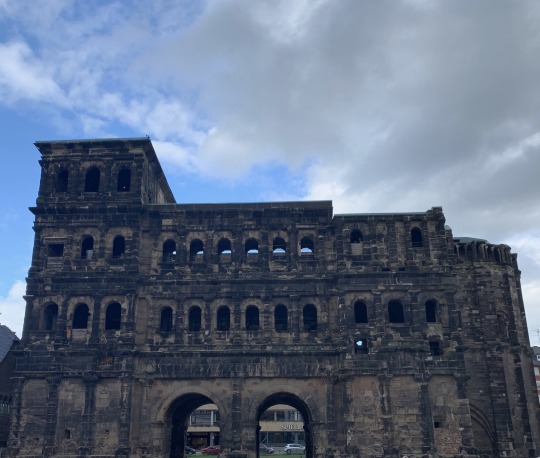
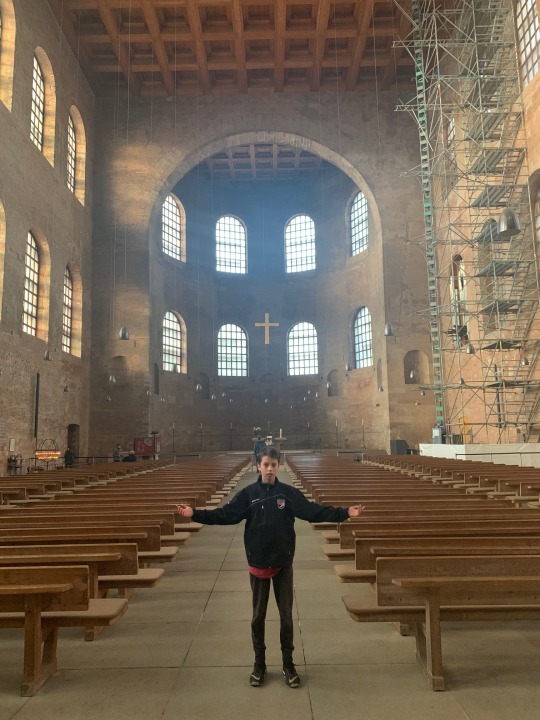
Emperor Constantine, who - though born under Roman gods - accepted Christ as the god of imperial Rome, lived in Trier for many years as he commanded the northern portion of the empire. With his conversion, the very power that punished Christ became subject to His eternal rule. Constantine originally built a temple to honor the memory of his mother, Helena, but after accepting Christianity as the greater power for the greater good, he ordered that it be demolished and a Christian church be built on its foundations. Above that very church, following centuries of destruction in wartime and addition in peacetime, stands The High Cathedral of St Peter, one of the finest collections of Christian art in the world.

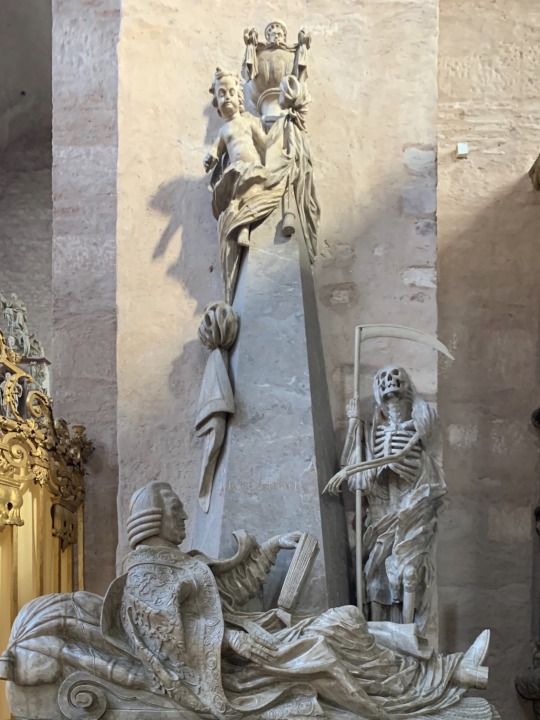

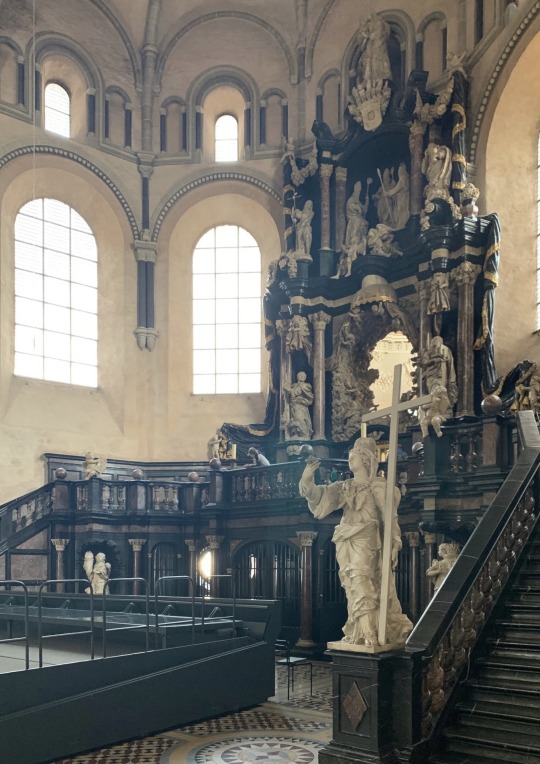
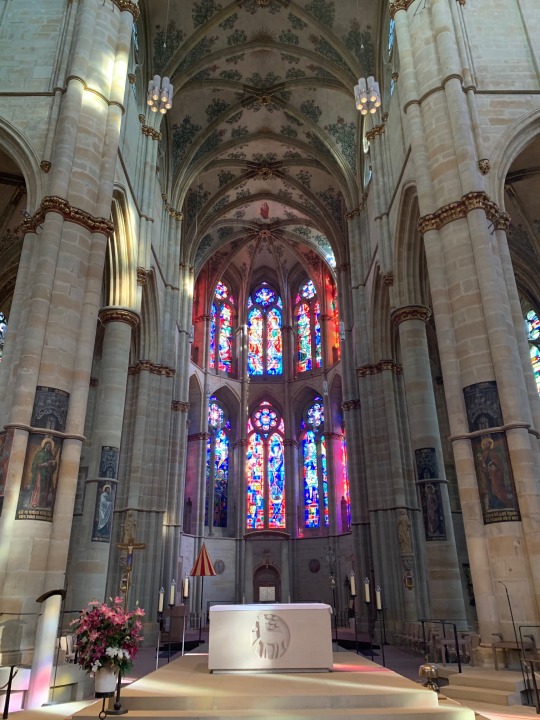
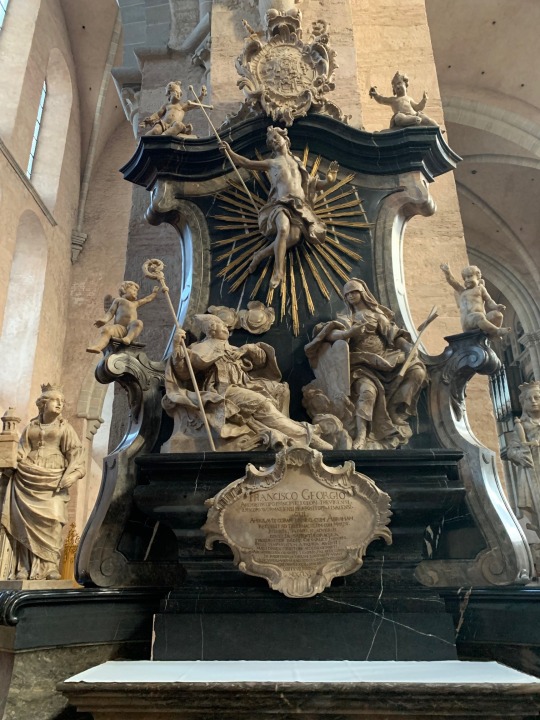
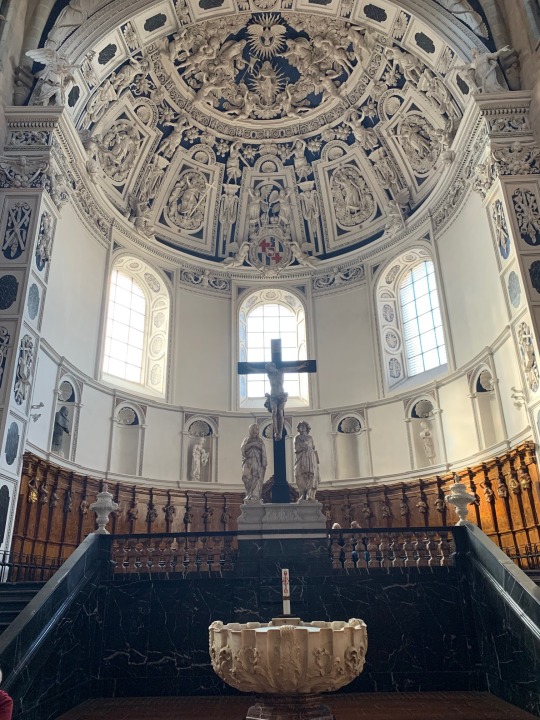
Then, deep beneath all of this wonder, Zain and I find the Roman vault, the foundations not only of this church, but of Catholicism itself. I am able to kneel and pray at the foot of christ within the first Roman sanctioned altar. [OM]
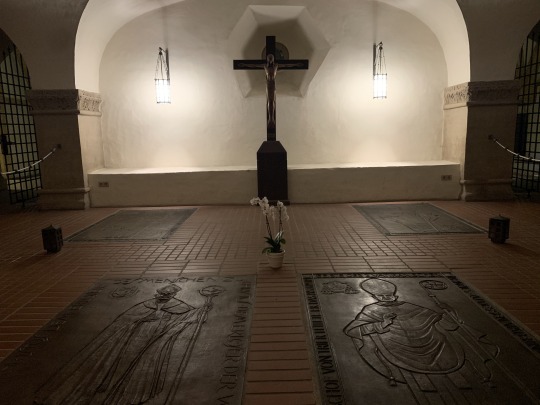
1 note
·
View note
Text
Welterbe (auf)gespürt und (er)fahren - D - Römische Baudenkmäler, Dom und Liebfrauenkirche in Trier
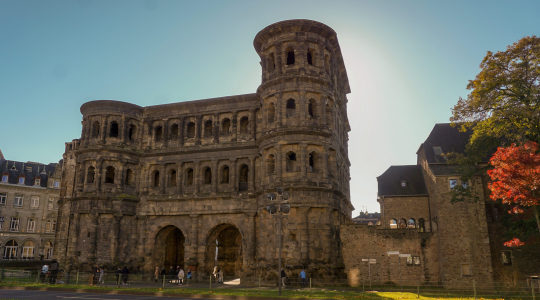
Zwischen Porta Nigra, Mosel und Weinbergen
Trier trägt seit 1986 als herausragendes Zeugnis der römischen Zivilisation den UNESCO-Welterbetitel. Die Stadt war war ab dem 1. Jahrhundert n. Chr. eine römische Kolonie und später ein großer Handelsplatz. Sie wurde Ende des 3. Jahrhunderts zu einer der Hauptstädte des Römischen Reiches, zum "Rom des Nordens" und war Sitz der Präfekten von Gallien, Germanien, Britannien und Hispanien und nach den Reichsreformen des Kaisers Diokletian Sitz des Vizekaisers (Cäsar) des Weströmischen Reiches.
Die Bauten des ersten und zweiten Jahrhunderts - die Moselbrücke, die Barbarathermen, die Porta Nigra und die Igeler Säule im gleichnamigen Nachbarort verdeutlichen den Reichtum der Handelsstadt. Aus der Herrschaft Konstantins stammen die monumentalen Bauwerke - das Kaiserbad, die Aula Palatina und der Dom als Ausdruck der Unermesslichkeit der kaiserlichen Macht.
Die Porta Nigra ist mit ihrem Erhaltungszustand und ihrer architektonischen Anordnung ein einzigartiges Bauwerk, das sich von allen anderen erhaltenen römischen Stadttoren unterscheidet. Im Mittelalter wurde sie als Doppelkirche genutzt. Der monumentale Backsteinbau der Basilika beinhaltet den größten bekannten Innenraum aus der Antike und war die Verkörperung des Sitzes und der Macht des Römischen Reiches. Die Kathedrale ist eines der ältesten Kirchengebäude der westlichen Welt und ein Zeugnis des christlichen Glaubens seit Konstantin. Ihre architektonische Gestaltung vereint Elemente aller Epochen der Klassik, des Mittelalters und der Neuzeit und einige der bedeutendsten Werke der Bildhauerei ihrer jeweiligen Epochen - den romanischen Kirchenraum, die Renaissancekanzel und einige barocke Marmoraltäre. In der Kathedrale befinden sich erzbischöfliche Gräber aus dem gesamten Zeitraum vom 12. bis zum späten 18. Jahrhundert. Die Liebfrauenkirche ist die älteste Kirche im französischen Hochgotikstil außerhalb Frankreichs. Sie wurde in nur 30 Jahren in stilistischer Reinheit fertiggestellt und ist das wahrscheinlich vollkommenste Beispiel für das zentralisierte Baukonzept im gotischen Stil.
Hier gibt es ein Einführungsvideo.
Porta Nigra
Wir fahren auf der Rückfahrt von Luxemburg an der Mosel entlang nach Trier. Der Verkehr in der Stadt ist trotz des Sonntags immens und auf der Suche nach einem Parkplatz komme ich an der Porta Nigra vorbei und erschrecke fast wegen ihrer so nicht erwarteten Größe.

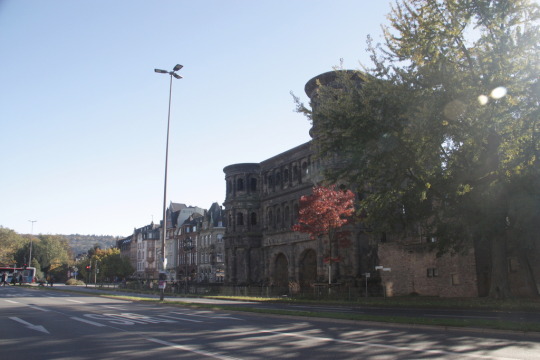
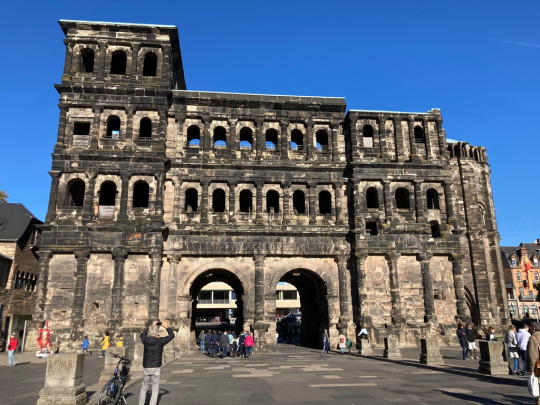
Historisches Stadtzentrum

Wir durchschreiten das gewaltige Tor und kommen ins Stadtzentrum. Auf dem Weg statten wir dem Denkmal für Karl Marx, dem berühmten Sohn der Stadt, einen Besuch ab.
Sehenswert ist der mittelalterliche Marktplatz mit seinen bunten und wundervoll verzierten Häusern, dem schönen Brunnen und der römischen Säule. Hier ist mein kleines Video.



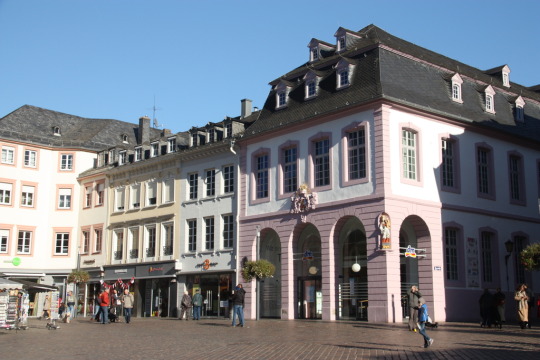
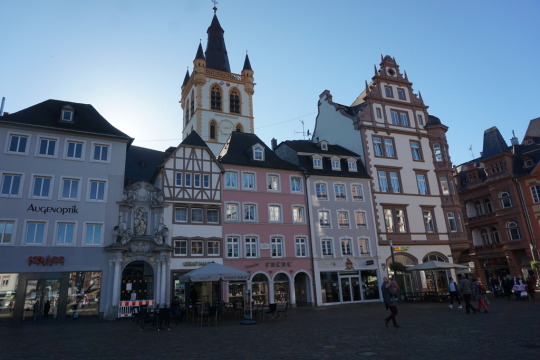

Die historischen Häuser bestechen durch ihre vielen schönen Details an den Fronten und Giebeln.

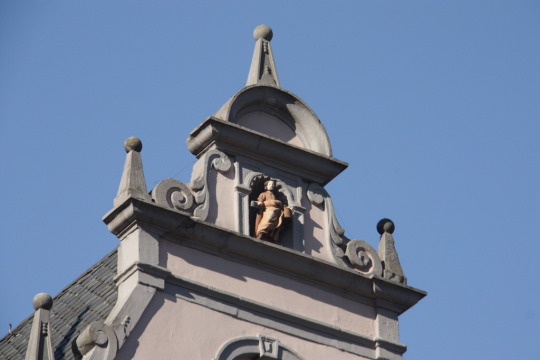




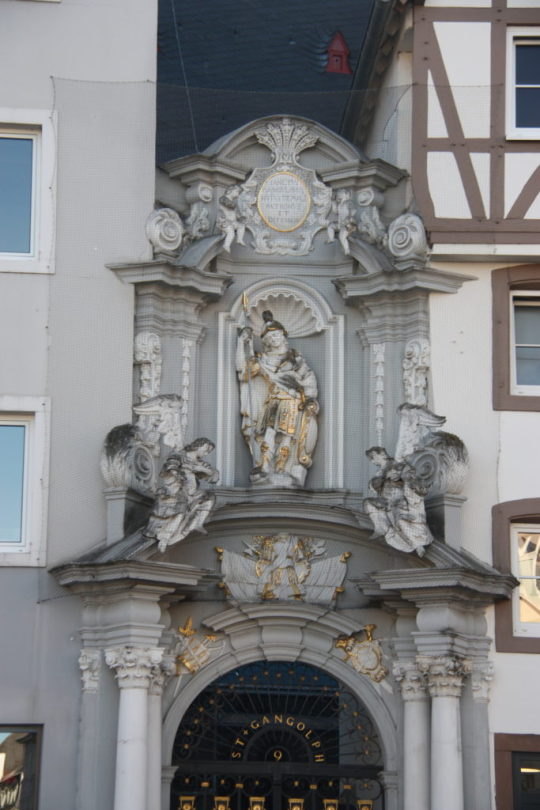




Amphitheater und Kaiserthermen
Vorbei an den Kirchen gehen wir, um die schöne Sonne zu nutzen, durch den Palastgarten zum Amphitheater, das in keiner römischen Stadt fehlt. Es sind nur noch Überreste zu sehen und stehen einige Gerüste. Ich werde auf meiner Tour nach Italien größere davon sehen, deshalb sparen wir uns den Eintritt*. Neben dem Amphitheater erhebt sich einer der bekannten Weinberge der Gegend.
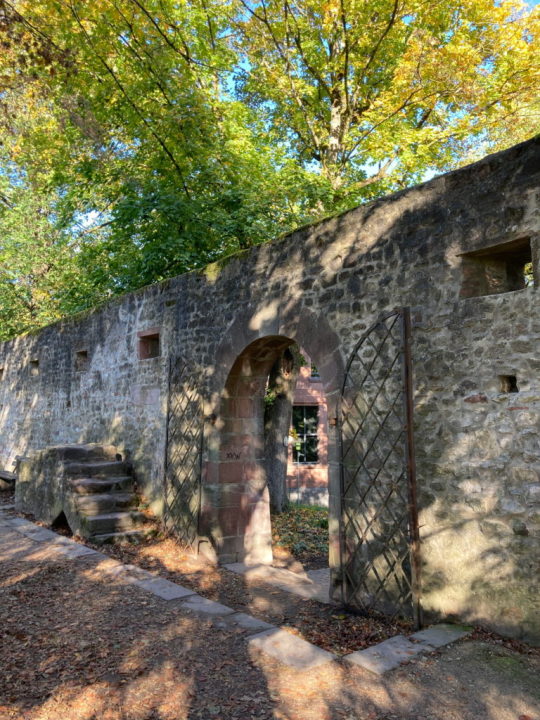
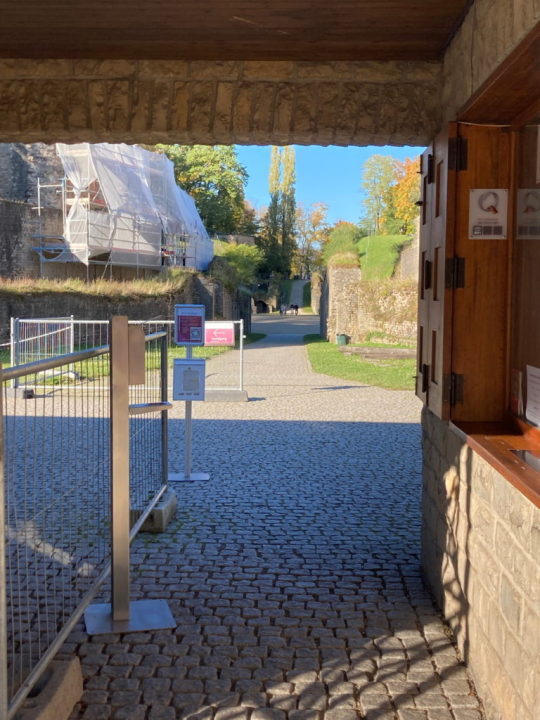




An den Kaiserthermen wird ebenfalls gebaut. Wir werfen einen Blick von außen.



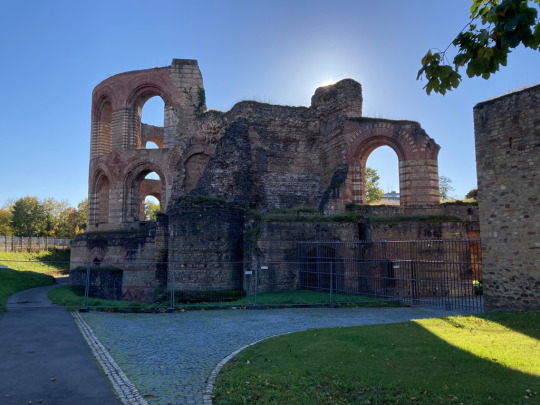
*Es gibt übrigens eine Reihe interessanter Kombitickets für mehrere Tage, die auch den Museumsbesuch beinhalten und dadurch wesentlich günstiger sind als die Einzelpreise.
Konstantinbasilika
Schon von weitem ist die Basilika zu sehen, der Thronsaal des Kaisers Konstantin. Der wuchtige Bau wird an seiner Stirnseite durch das zierliche Kurfürstliche Palais etwas aufgelockert. Doch im Inneren wird die gewaltige Größe deutlich.
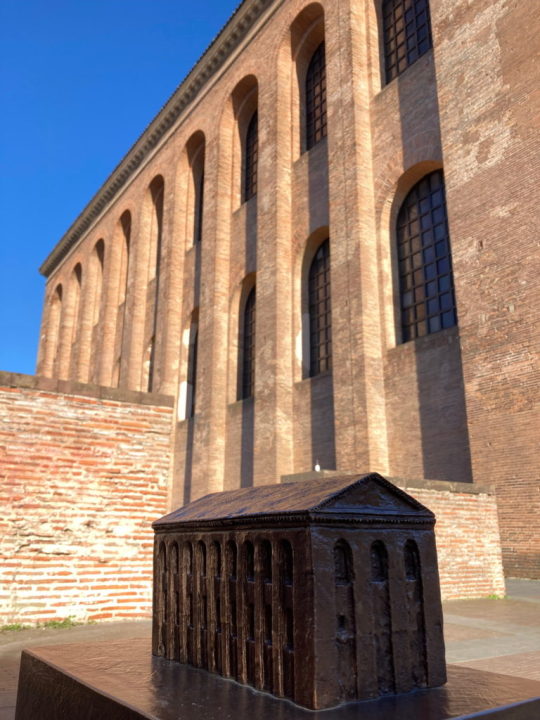

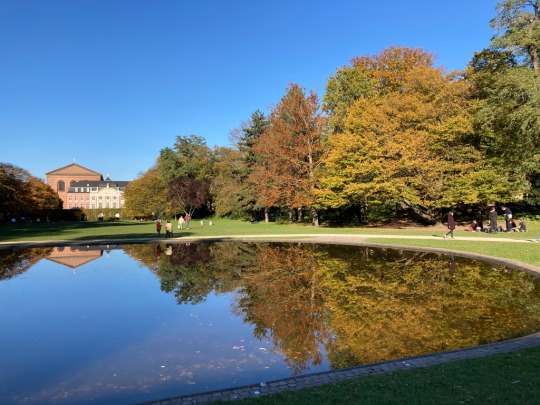
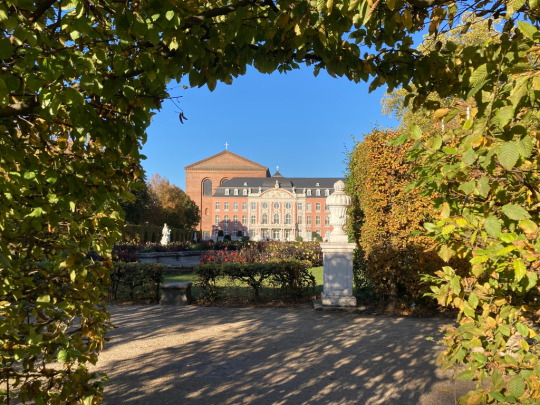

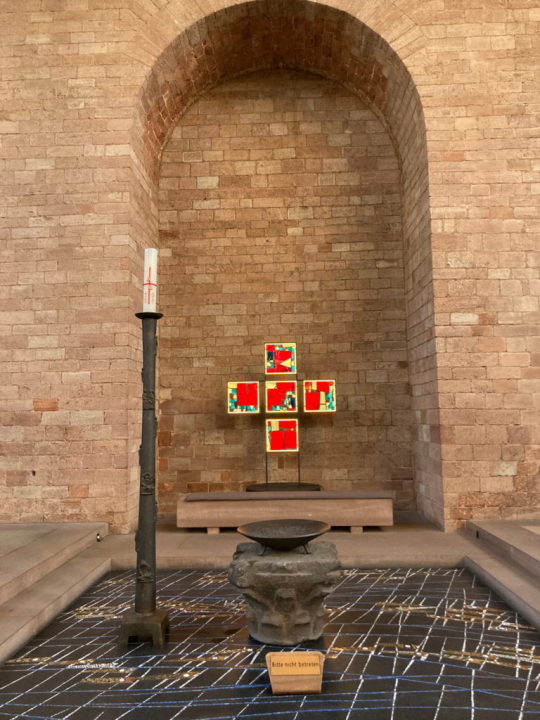
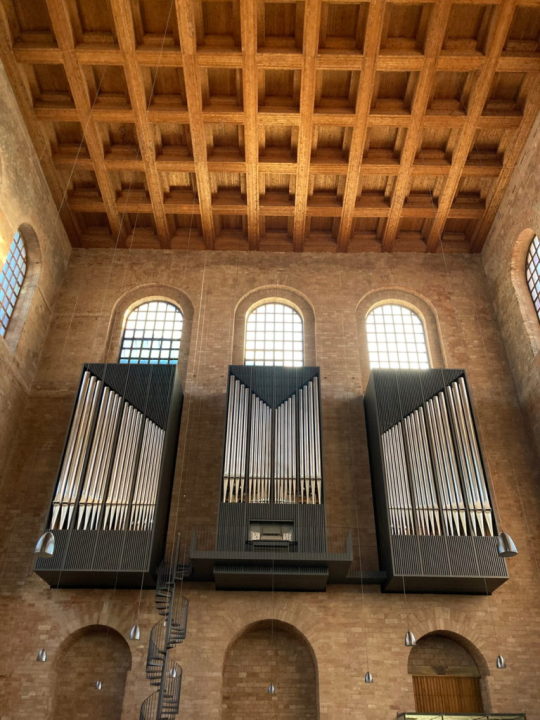



Dom und Liebfrauenkirche
Der Dom und die Liebfrauenkirche sind direkt aneinander gebaut, ein seltener Anblick.

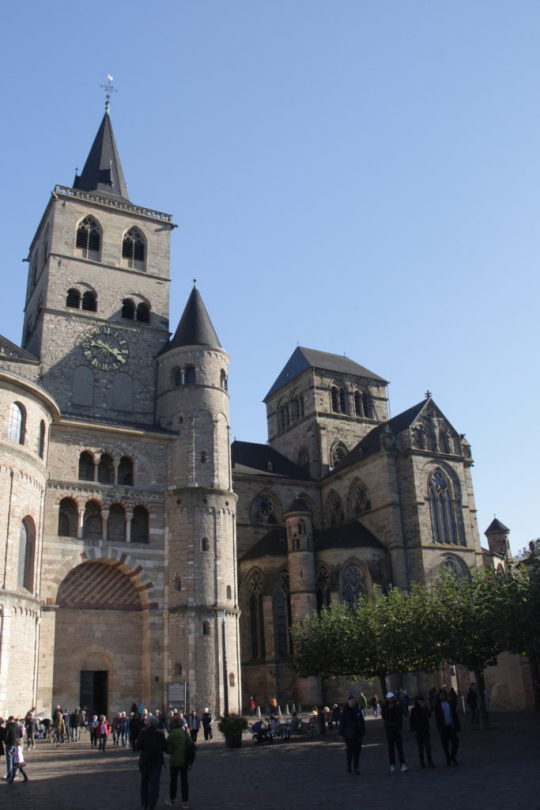
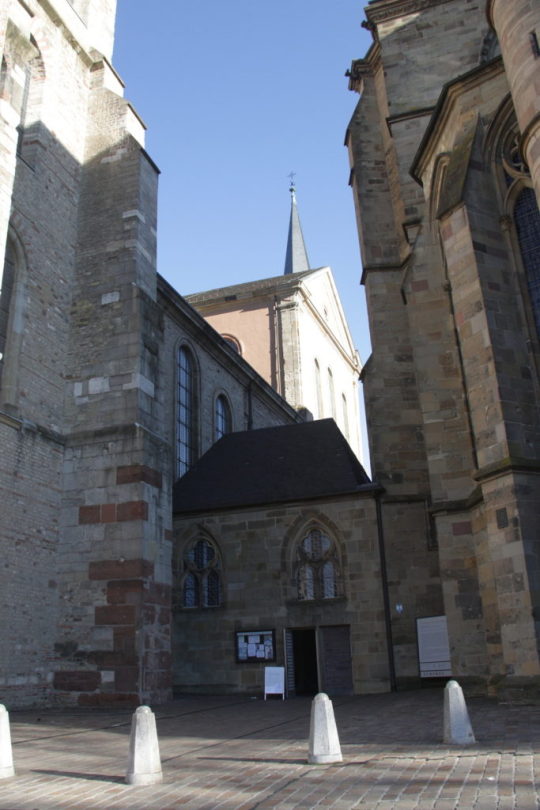
Wir besichtigen zunächst die innen wie außen elegante und reich verzierte gotische Kirche.


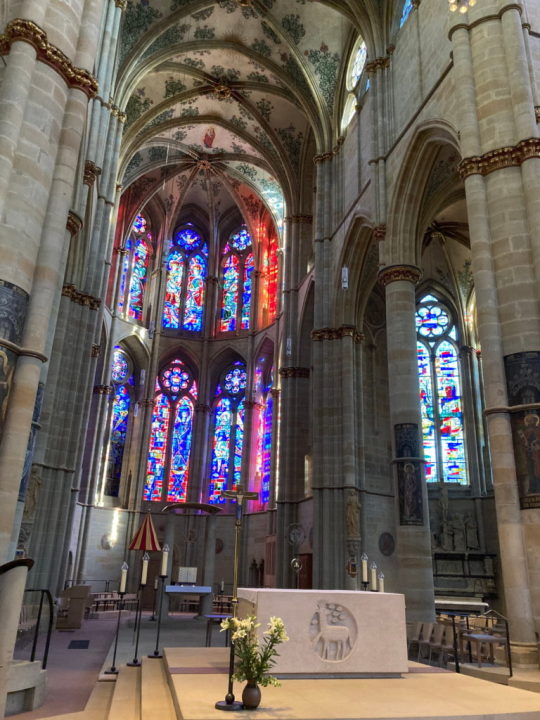

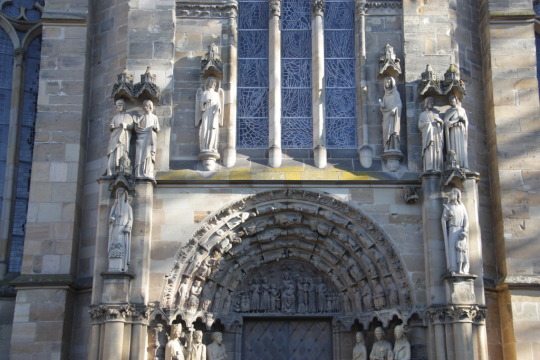
Read the full article
#Dacia-Dokker#Deutschland#Dobby#Entdeckungsreise#Hochdach-Kombi#Kurzbesuch#Leichtbau#Luxemburg#Minicamper#Reiseziele#Roadtrip#Römer#Rundfahrt#Sehenswürdigkeit#selbstorganisiert#Siedlung#Städtetrip#Trier#UNESCO-Welterbe#Urlaub#Urlaubplanen#Welterbe
0 notes
Photo
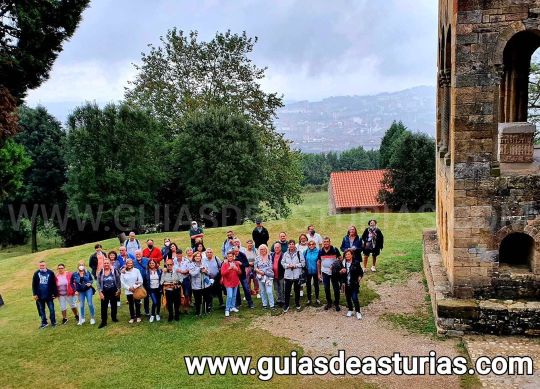
Domingo de #otoño , momento mágico para acercarnos al #palacioreal de #santamariadelnaranco en #oviedo y conocer de cerca el #arte #prerromanico asturiano Sobrecoge saber que ésta construcción tiene 1200 años , realizada en plena época del apogeo del #rey #ramiro I , donde quiso realizar un " aula palatina" con todo el esplendor de las cortes orientales. Un #imprescindible en cualquier #visita a la ciudad. . #oviedomola #oviedoguias #visitasenoviedo #visitasenasturias #visitasguiadasenasturias #guiasoficiales #guiasturisticos . . #congresos #worldcheeseawards #incentivos #congresosenoviedo #viajes #agencias #reels #repost #pickoftheday #asturias (en Santa María del Naranco) https://www.instagram.com/p/CUSna5vMxrT/?utm_medium=tumblr
#otoño#palacioreal#santamariadelnaranco#oviedo#arte#prerromanico#rey#ramiro#imprescindible#visita#oviedomola#oviedoguias#visitasenoviedo#visitasenasturias#visitasguiadasenasturias#guiasoficiales#guiasturisticos#congresos#worldcheeseawards#incentivos#congresosenoviedo#viajes#agencias#reels#repost#pickoftheday#asturias
0 notes
Text
OSSO PALATINO
Palatino
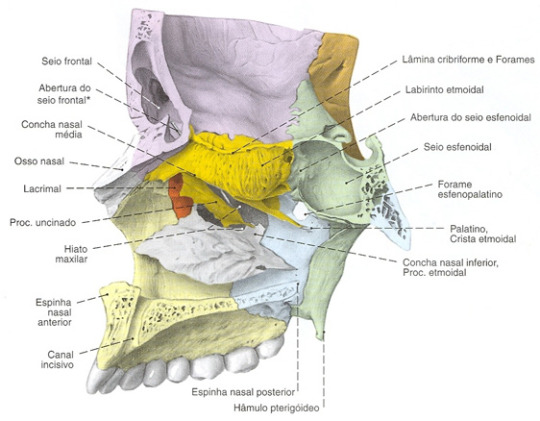
Osso par que se articula anteriormente com os processos palatinos das maxilas formando sutura palatina transversa.
Formado por:
Lamina vertical.
Lamina horizontal (se eleva na margem medial forma a crista nasal com o palatino oposto).
Processo piramidal (destaca-se para trás na união das duas lâminas).

VÍDEO AULA - OSSO PALATINO: Sistema esquelético _ Osso Palatino com Professor Leandro Bueno
https://www.youtube.com/watch?v=7gJVU__bRNg
Roteiro osso palatino:
Lamina horizontal
Lâmina perpendicular
Espinha nasal posterior
Forame palatino maior
Forame palatino menor

Lamina vertical.
Sulco pterigopalatino (localizado na face lateral da lamina vertical e juntamente com o sulco pterigopalatino da maxila formam o canal pterigopalatino, que irá se abrir na cavidade bucal através dos forames palatino maior e palatino menor/acessórios).
Processo orbital (ajuda a formar o assoalho da cavidade orbital).
Processo esfenoidal (se articula com o corpo do osso esfenóide).
Incisura esfenopalatina (separa o processo orbital e esfenoidal).
Orifício esfenopalatino (no osso articulado a incisura esfenopalatina forma o orifício esfenopalatino que comunica a fossa pterigopalatina com a cavidade nasal).
Crista conchal ou turbinada inferior (na face medial da lamina vertical, vai se articular com a concha nasal inferior).
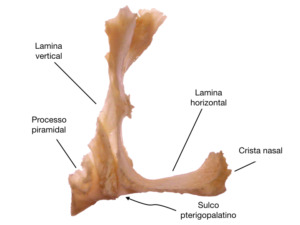
Lamina horizontal
Possui uma margem anterior que se articula com o processo palatino da maxila; uma margem medial que se articula com a lamina horizontal do palatino oposto e uma margem posterior livre que na linha média forma junto com o outro palatino a Espinha nasal posterior, ainda possui uma face superior que forma parte do soalho da cavidade nasal e uma face inferior que ajuda a formar o teto da cavidade bucal (palato duro), onde encontramos os Forames palatinos maiores e menores/acessórios que são as aberturas inferiores do canal pterigopalatino.
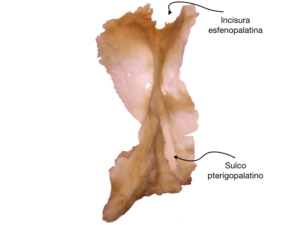

Maxilas e palatinos vista superior
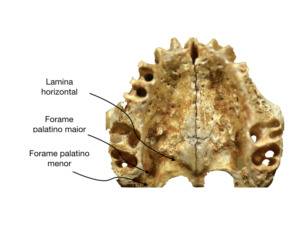
Maxilas e palatinos vista inferior
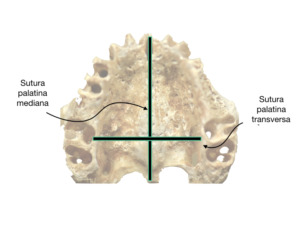

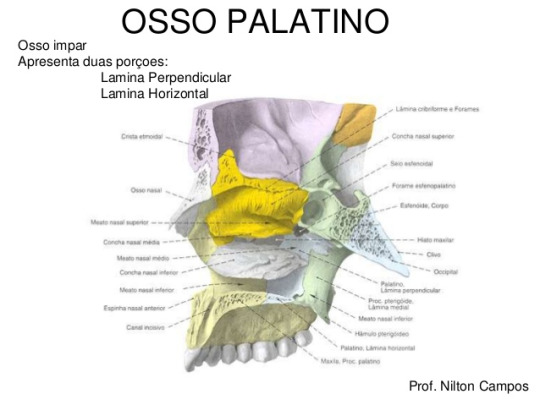

Fonte: FERNANDO ABREU
0 notes
Photo
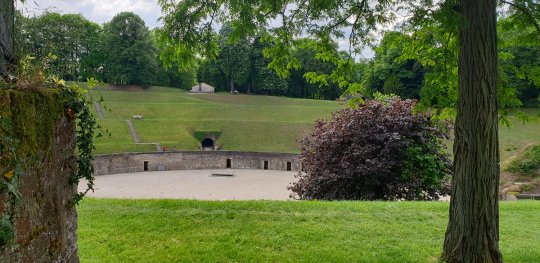
(via TimeTravelRome AppさんはTwitterを使っています: 「🛵"80 days around the Roman Empire". 🗓 Day 28. #Trier 🇩🇪. Augusta Treverorum was a major #Roman hub for fiscal and military affairs of the Empire. The main spot here is the famous #PortaNigra. And the Aula Palatina is considered the largest extant ancient Roman basilica ! https://t.co/dAIXoVvUrr」 / Twitter)
0 notes
Photo


Aula Palatina bzw Konstantin-Basilika Der frühere Thronsaal des römischen Kaisers wurde umgewandelt in eine evangelische Kirche die dem heiligen Konstantin geweiht ist. Zwar etwas schmucklos und simpel eingerichtet, doch trotzdem mit ihren Höhen und Weiten eine monumentale Erscheinung.😮
1 note
·
View note
Video
youtube
Places to see in ( Trier - Germany ) Aula Palatina
0 notes